Estimated reading time: 6 minutes
Ever wondered whether over pruning fruit trees and lack of fruit are related? Do you have any trees this year that don’t have fruit on them?
Not sure why?
It might be because of how you pruned them.
Pruning for fruit
The way you prune your fruit trees can definitely have a big impact on how much fruit they bear.
The harder you prune your fruit trees, the more the tree will respond by growing, to replace the wood you removed. It’s one of the basic pruning principles that informs our Foolproof 7-step pruning method.
You can clearly see it at work in these pear trees below. They’re not on our farm, but we had to stop and grab a photo when we drove past them because they beautifully illustrate the principle.
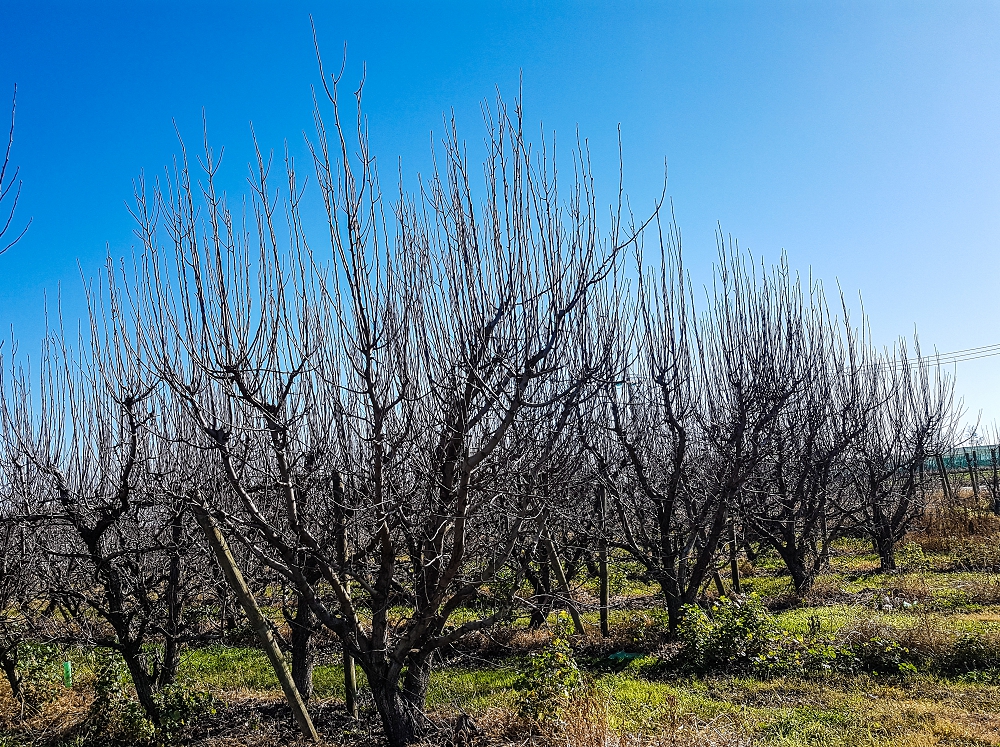
The trees have been hedge pruned, which has resulted in massive growth at the tops of the trees. It’s not a technique we recommend in Grow Great Fruit but is common in big commercial orchards.
What effect does hard pruning have on your tree?
If you over prune a tree, you may force it to divert all its energy into growing wood instead of producing fruit.
It’s one of the most common (but by no means the only) reasons your tree may not have fruit. We’ve experienced this many times on our place when pruning too hard or too late has severely disrupted the crop.
Keeping your fruit tree balanced should be your aim when winter pruning mature fruit trees. You want it to keep growing new wood each year, but you also want it to stay calm and produce plenty of fruit.
To achieve this, you want to prune it as little as possible – so there’s no risk of over pruning!
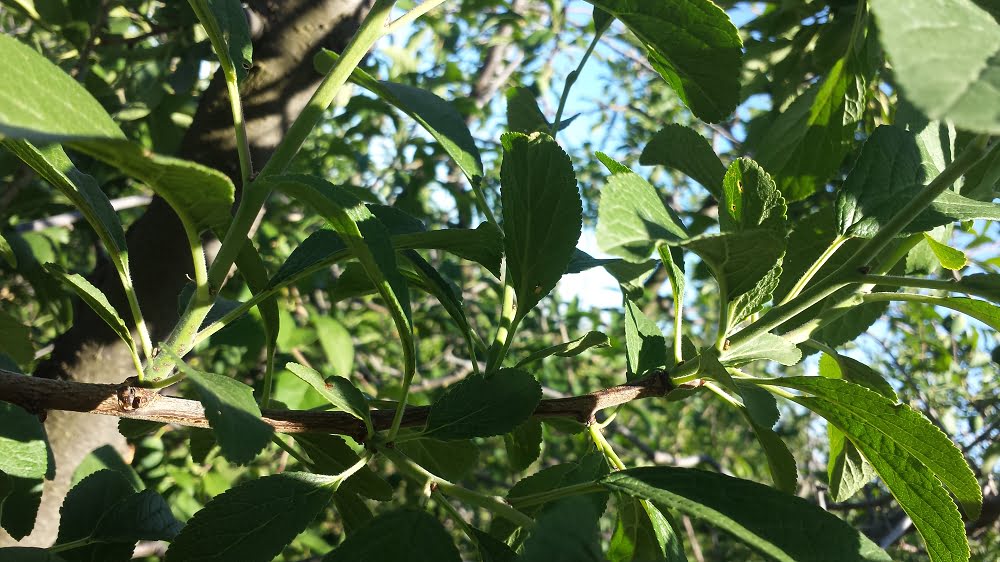
This photo above shows a President plum tree with lovely strong new shoot growth in response to last winter’s pruning.
You can see in the photo below that it also has a nice crop of fruit – success!
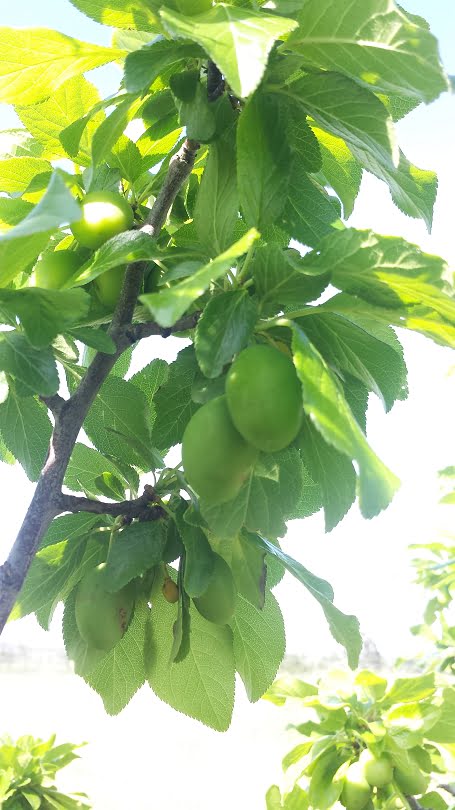
However for young trees, you’re aiming to tip the balance between shoot growth and fruit production firmly towards growth!
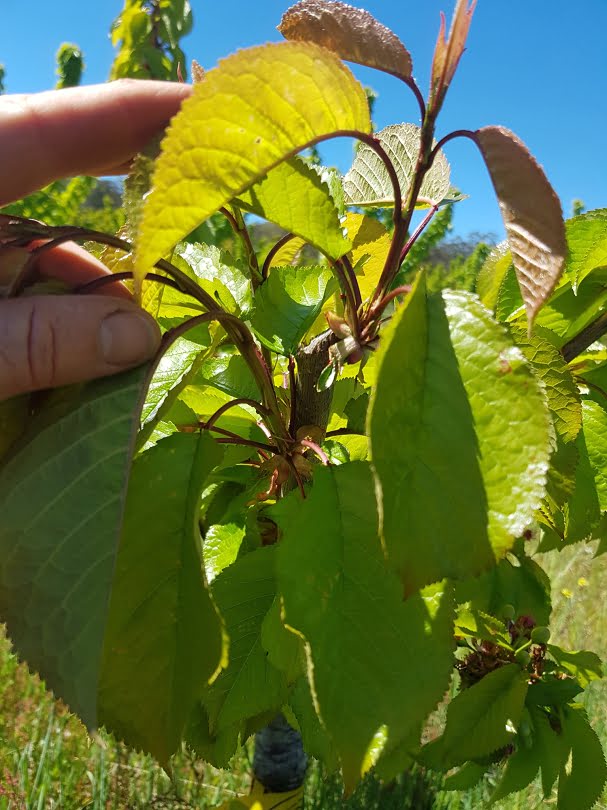
How quickly can you expect a crop on your young fruit trees?
We often get asked the question, how quickly will a fruit tree start producing fruit. In fact, they’ll often flower and bear fruit the year you plant them (depending on what type of tree they are).
However, we reckon it’s better to NOT let them have fruit until the tree’s grown enough branches.
It usually takes at least two to three years to prune a fruit tree into the right shape if you’re trying to grow a vase-shaped tree (which is a great shape for most backyards),
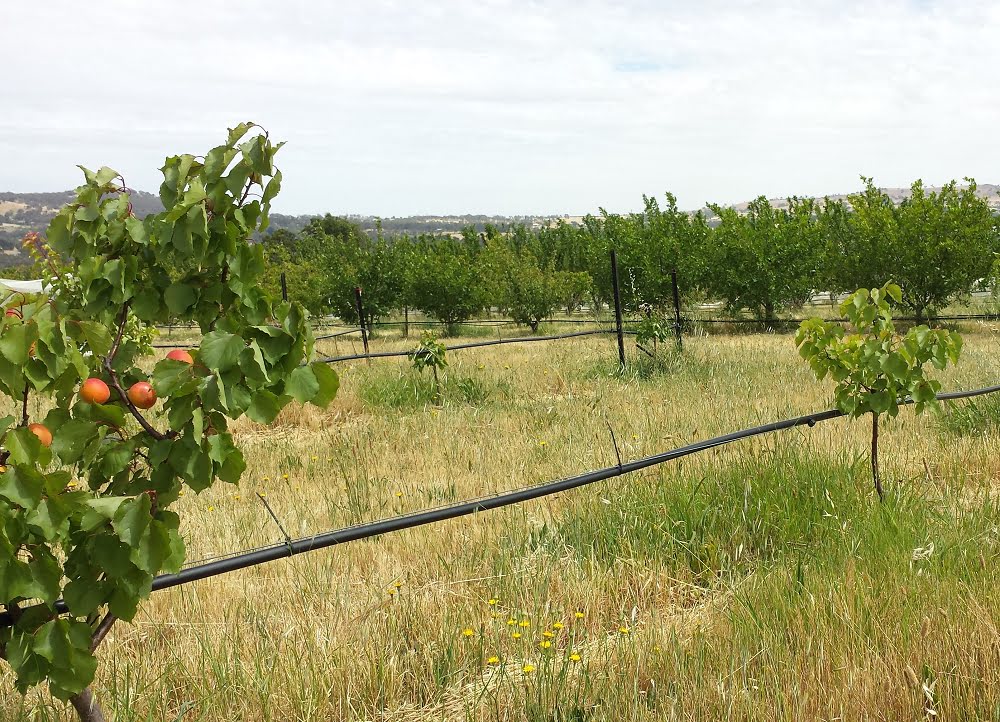
You can see that the tree on the left has grown strongly in the photo above of three-year-old apricot trees. In fact, it has grown enough branches to make the shape we want, i.e. a vase. We can now let it bear fruit because it’s mature enough.
However, the tree on the right hasn’t grown as well for some reason and is much smaller. We’ve taken off the fruit that set this year. The tree can then put its energy into growing new branches for at least another year before it’s allowed to have fruit.
How to reduce the risk of over pruning your tree
Learning how to look after your trees in the first 3 years will set them up for life. It’s especially important to learn how to prune them the right way from the beginning.
With good establishment pruning, you should have a calm tree that doesn’t need much pruning each year. This minimises the risk of over-pruning the tree.
It may just help to solve the problem of why your tree has no fruit!
Related Articles
How much fruit will your tree produce?
Working out how much fruit a mature fruit tree can grow will help you plan how many trees you need in your garden to meet your family’s needs.
How to prune your apple tree
Pruning apple trees takes a little more specialist knowledge than other fruit types, but your trees will reward you with ample crops.
Taming monster fruit trees with renovation pruning
Learn how to use a technique called renovation pruning to tame large, unpruned, and out-of-control monster fruit trees.

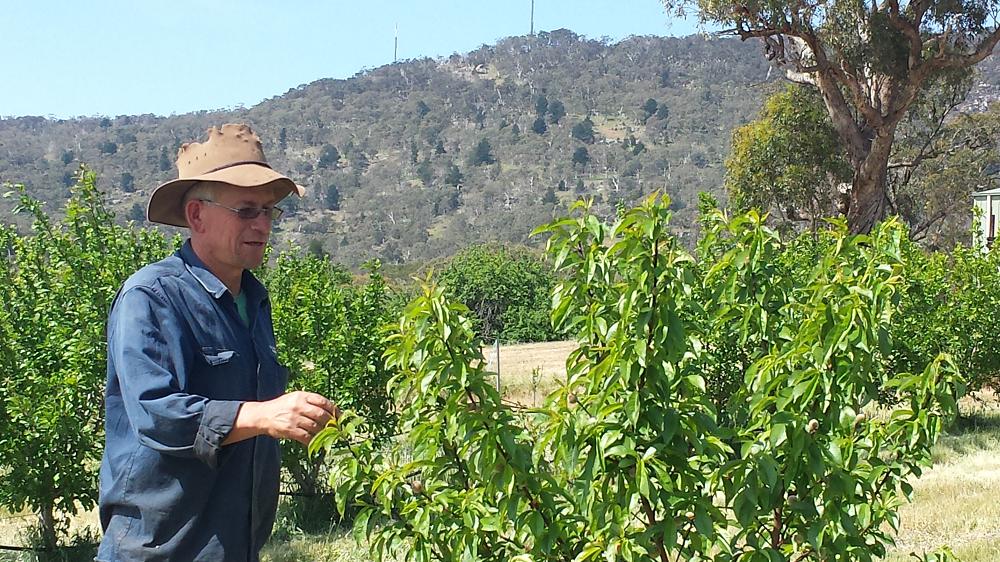
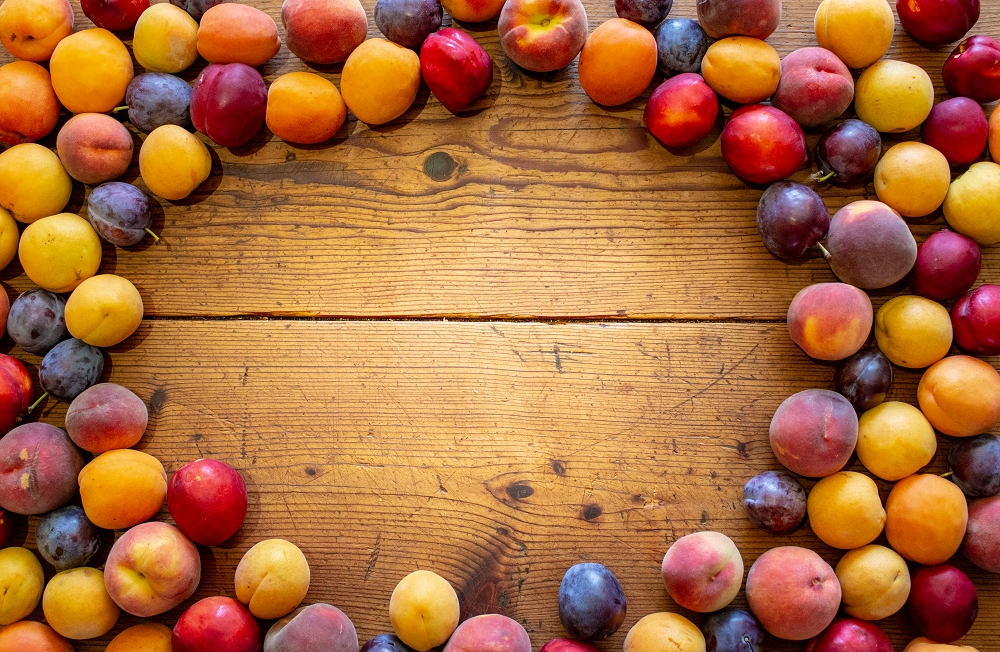
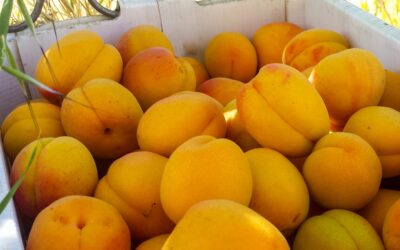
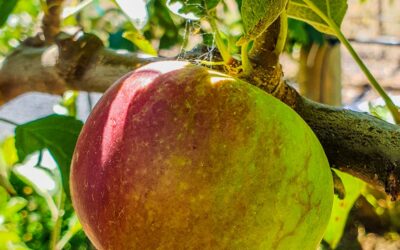
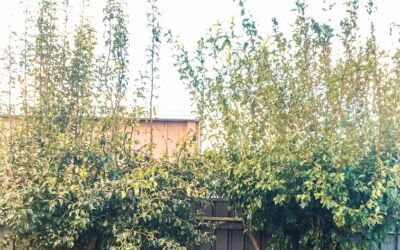
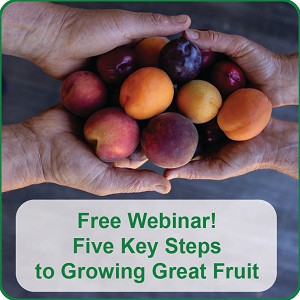
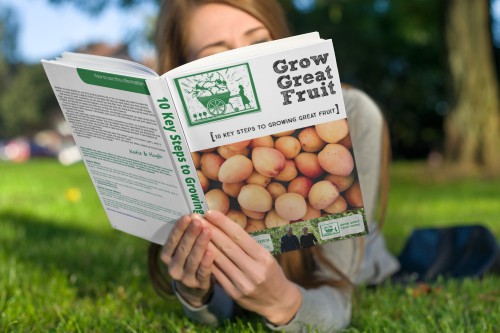
Ok.Still not sure what is happening to 2 apricots now into
Their third year and have produced 4 -6 apricots in total. They have been pruned by our experienced gardener and even he is baffled. They are otherwise healthy in a small orchard that has abundant fruit
Would like your opinion please?
Hi Robbie, other things that can cause lack of fruit are (1) frost, (2) lack of pollinators or pollinisers, (3) blossom blight or other diseases. But also, they’re still very young trees, and are putting most of their energy into growing, so it’s way too early to call it as a problem yet. Give them another couple of years to settle down, and in the meantime pay particular attention next spring to whether or not they flower, and what happens to the flowers.
Many thanks.. we keep bees so expect they are pollinated.. we do experience light frost and I know they didn’t have blight.. I don’t think they are flowering well.. but will do as you say..
My husband just cut our 15 year old lemon tree back to the bear stumps on every branch. No leaves no greenery left at all. Will it die or re grow. I am so upset
Hi Jeanette, without seeing the tree it’s a bit hard to comment, but it is quite likely it should regrow, possibly quite vigorously after a hard prune like that. You might need to pay attention to the next few prunes it gets to ensure good structure for fruiting though. Hoping it bounces back! Meg – GGF team.
I have a pear tree that is 6 years old and it has never flowered. I have tried pruning it hard, moderately and not at all and still no flowers. I’m about to give up on it, any advice?
My friend, Richard, has plum tree which would be 8 or 9 years old. When he bought it they said it needed a pollinator, so he got a second one. The “pollinator” died in the drought and the other plum bore fruit for the first time! Go figure, as they say. So don’t give up
Thanks for sharing this story Eleanor – it just goes to show that it really can take some trees a few years to properly settle down and start fruiting – maybe it just needed a little stress!
Hi Tania, we’d recommend leaving it only lightly pruned for another year or two to see if it settles down and starts flowering – if you’ve pruned it hard at times it can take a year or two to recover, and it can take young trees a while to settle down and start cropping well. Also continue with soil improvement – make sure you add some really good quality compost once or twice a year, plus worm castings if you can get them.
I am glad that I detected this weblog, exactly the right information that I was searching for!
Excellent, glad you found us!
Interested in the questions and answers on pruning. Because I have limited space I have espaliered my fruit trees. I was told they need summer pruning which I do. The apricot and nectarine have done brilliantly the plum not so much only a few plums and there weren’t many flowers. Sadly my apricot seems to be afflicted with some sort of pest making “tracks” across the green fruit and many dropping. Wondering if it could be ants or snails – have found both on the tree. Would a photo be useful?
Hi Myra, sounds like you’re getting some successes there. The plum problem sounds more like snails than ants, so you could try excluding them with a sticky barrier
Glad to read your article.
I have an apricot tree about 6 ft tall now (from seed). This 3 -4th year, it had lots of flowers for the first time.
Lots of them dropped.
I had only 10 fruits for the first time. I was so excited and happy to eat the 10 fruits.
Should I prune this summer, or leave it as is?
Thank you.
HI Katie,
I have three mature apricot trees in various positions on a 3 acre property that faces Bass Strait. We have always had a plethora of apricots but this year- none. The pruning was not radical and I have two bee hives with busy bees. The only thing I can think of is that the winds were so bad they may have blown the flowers off the trees. Our other trees, plum, apple and cherry are fruiting whilst the two pear trees are not. I would love your opinion as to what you think may be the issue.
Hi Penny,
How was the weather while the trees were flowering? It’s possible that despite busy bees, given all the wet weather, that the pollination window might have been missed for those trees but not others. Or, have you noticed any disease on the tree? It’s been a challenging year for fungal problems with apricots as well. Finally, apricots can be particularly fussy – other things that could have effected fruiting might be frost at the wrong time, or having ‘wet feet’. And just to reassure you, generally with wind, the petals may fall off the flower but the inside of the flower will often stay on the tree and can still be pollenised. Hopefully with a summer prune, you’ll have apricots again next year! Meg – GGF team.
I have an approx 12yr old apricot tree that in the last few years has been sending up suckers at the trunk base and 2 to 5 metres away in the lawn. They get mown off but are increasing and getting bushier.
Any suggestions ?
You might want to actually dig around some of the suckers and see if you can prune back really thoroughly. We have a blog about this that steps through a good process. Hope that helps! Meg – GGF team.
I have a 12 year old miniature green apple (granny smith) tree that I think i have over pruned and now is growing madly but producing little fruit. Each season it produces heaps of new growth at the top which i have been constantly removing.
Is there a way to reverse this problem?
Hmm, that sounds like exactly the response you might get from over pruning – a strong, vigorous growth response! It’s possible you might have pruned off the parts of the tree that produce fruit too – I’d suggest taking a look at our blog about knowing the different parts of your fruit tree – this, combined with our pruning resources should help you be in a good position to prune well this coming winter :). And regarding the growth at the top, apples (unless they are on a dwarfing rootstock) tend to have a strong desire to reach the sun and get very tall, they love to put on vertical growth, so yes, it’s a good idea to reduce this when pruning. Meg – GGF team.